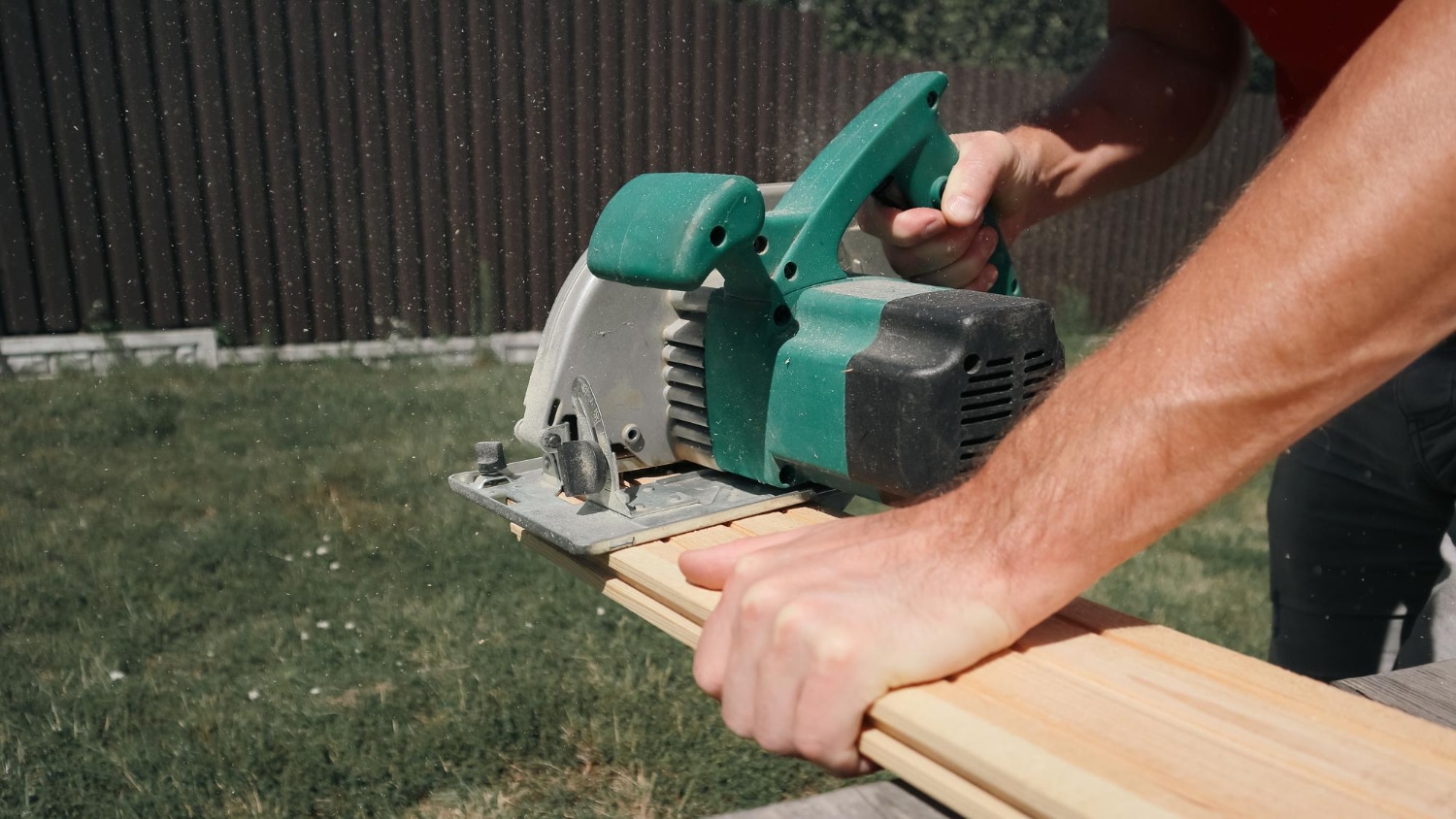Table of Contents
ToggleCheck Twice, Cut Once
Trex decking is a favorite for many homeowners because it’s durable and low maintenance. Made from a mix of wood fibers and plastic, it offers the look of wood with the added benefits of composite materials. But if you’re planning to install it yourself, you might wonder if Trex decking can be cut and how to do it properly.
Cutting Trex decking isn’t much different from cutting wood, but there are some important steps to follow. Knowing the right tools and techniques can make the job easier and ensure you get clean, professional-looking results. Whether you’re making straight cuts or curved ones, getting the hang of the cutting process is key to a successful installation.
We’ll go over the tools you’ll need, guide you step-by-step through the cutting process, offer tips for ensuring clean cuts, and highlight common mistakes to avoid. This way, you’ll be ready to cut your Trex decking like a pro and create the perfect outdoor living space.
Tools Needed for Cutting Trex Decking
Standard Tools and Their Uses
To cut Trex decking, you’ll need some basic tools. A circular saw is the go-to choice for most cuts. It can handle straight cuts easily and is versatile for various angles. Make sure to use a saw blade designed for composite decking; it will help you get clean cuts without fraying the edges.
For detailed or curved cuts, a jigsaw is your best bet. This tool is perfect for making intricate shapes and rounding off the edges. Again, use a blade suited for composite materials to get the best results.
A tape measure and pencil are essential for marking your cuts accurately. It’s important to measure twice and cut once to avoid mistakes. A speed square will help you make precise 90-degree cuts. Don’t forget about clamps; they will hold your boards steady as you cut, making the process safer and easier.
Safety Gear and Precautions
Safety should always come first when cutting Trex decking. Wear safety goggles to protect your eyes from flying debris. Dust from composite materials can be harmful, so wearing a mask is a good idea, especially if you’re doing a lot of cutting.
Gloves can protect your hands from splinters and the heat generated by cutting. Hearing protection is also wise, as saws can be loud. Make sure your work area is well-ventilated to avoid inhaling any dust particles.
Keep your work area clean and organized to avoid accidents. Remove any tripping hazards and make sure your saw is on a stable surface. Always read and follow the safety instructions that come with your tools to ensure you’re using them correctly.
Step-by-Step Guide to Cutting Trex Decking
Preparing the Boards
Preparation is key to a successful project. Start by measuring the area where you’ll install the deck. Mark the boards where you need to cut, using a tape measure and pencil. Double-check your measurements to ensure accuracy.
Lay out the boards on a stable surface, preferably on saw horses. This will give you enough space to maneuver your tools. Use clamps to hold the boards in place. This will ensure they don’t move while you’re cutting.
Making Straight Cuts
For straight cuts, set up your circular saw with the appropriate blade. Align the blade with your marked line. Start the saw and let it reach full speed before you begin cutting. Guide the saw along the line steadily. Don’t rush; let the saw do the work.
If you’re cutting multiple boards of the same length, use one as a template. This way, you can mark and cut each board consistently. After making the cuts, check the edges. Use a file to smooth any rough spots.
Making Curved Cuts
Curved cuts require a bit more finesse. Use a jigsaw with a blade designed for composite materials. Mark the curve on your board with a pencil. Clamp the board securely to your work surface.
Begin your cut by inserting the jigsaw blade at a slight angle to get it started. Follow the marked line carefully, guiding the jigsaw slowly along the curve. Keep your hands steady to avoid veering off the line. After completing the cut, check for any rough edges and smooth them with a file if necessary.
Tips for Ensuring Clean Cuts
Using the Right Blade
Choosing the right blade is critical for making clean cuts in Trex decking. Use a carbide-tipped blade designed specifically for composite materials. A blade with fewer, but larger, teeth (like 24-tooth to 40-tooth) is ideal as it reduces heat buildup and minimizes chipping.
Regularly check the blade for any wear and tear. A dull blade can cause rough cuts and damage the decking material. Keep a spare blade handy to avoid delays in your project. Follow the manufacturer’s guidelines on blade selection for the best results.
Maintaining Steady Cuts
Maintaining a steady hand while cutting is crucial for clean edges. Use clamps to secure the board firmly before you start cutting. This will prevent the board from moving and ensure a straight cut. Hold the saw firmly and guide it along the marked line without forcing it. Let the saw’s weight do the cutting.
Take your time and avoid rushing. Steady, slow cuts produce the best results. Practice on a scrap piece of Trex decking if you’re new to using these tools.
Avoiding Chipping
Chipping can be a problem if the material isn’t cut correctly. To minimize chipping, cut the Trex decking with the finished side down. This helps avoid splinters on the surface that will be visible.
You can also place a piece of masking tape over the cutting line to further reduce chipping. Make sure to remove the tape immediately after cutting. For tricky cuts, consider scoring the line lightly before making the final cut. This technique can lead to a much cleaner edge.
Common Mistakes to Avoid When Cutting Trex Decking
Incorrect Blade Selection
Using the wrong blade type is a common mistake. Many people think any saw blade will do, but that’s not true for composite decking. Standard wood blades often lead to rough and jagged cuts. Always use a carbide-tipped blade designed for composite materials to get smooth and clean edges.
Improper Measurements
Inaccurate measurements can lead to wasted materials and improper fitting. Double-check your measurements before cutting. Measure twice, cut once is a rule to remember. Use a tape measure and a pencil for precise marking, and verify everything before you start making cuts.
Inadequate Support During Cutting
Lack of proper support can cause the board to wobble or move, leading to uneven cuts. Always use saw horses or another stable surface to support the Trex decking while cutting. Secure the board with clamps to ensure it stays in place. Make sure the entire length of the board is supported to avoid any bending or breaking during the process.
Conclusion
Cutting Trex decking can seem like a challenge, but with the right tools and techniques, it’s manageable for any DIY enthusiast. From selecting the correct blade to ensuring steady cuts, following these steps can help you achieve clean, professional results. Proper preparation and measuring twice before cutting can save you from common pitfalls. The stability of your cutting surface also plays a significant role in making precise cuts.
Want expert help with your decking project? SpaceStars Deck Builders specializes in crafting beautiful, one-of-a-kind outdoor living spaces. Reach out to us today for professional guidance and quality results on your next custom deck in Michigan.


